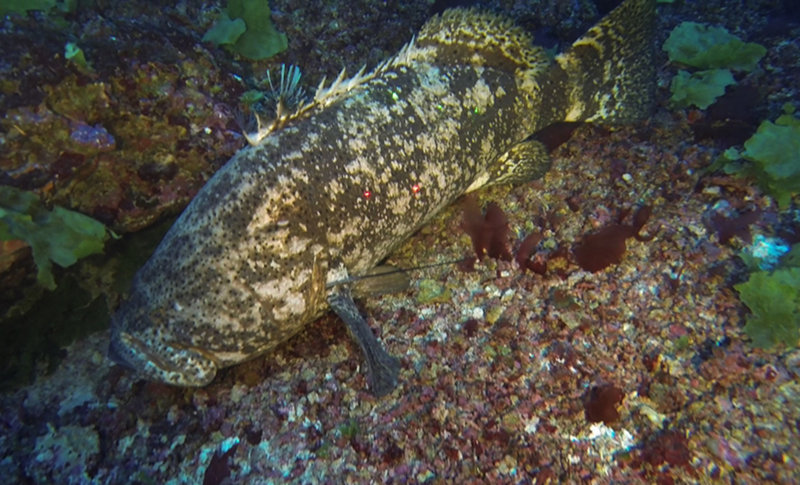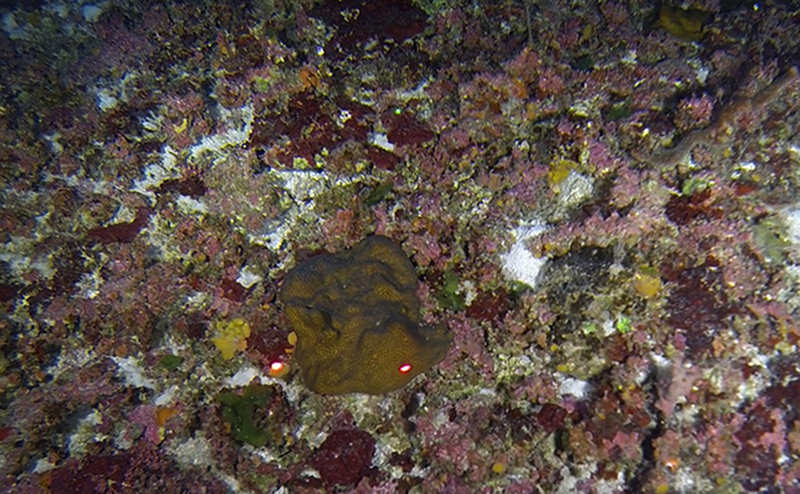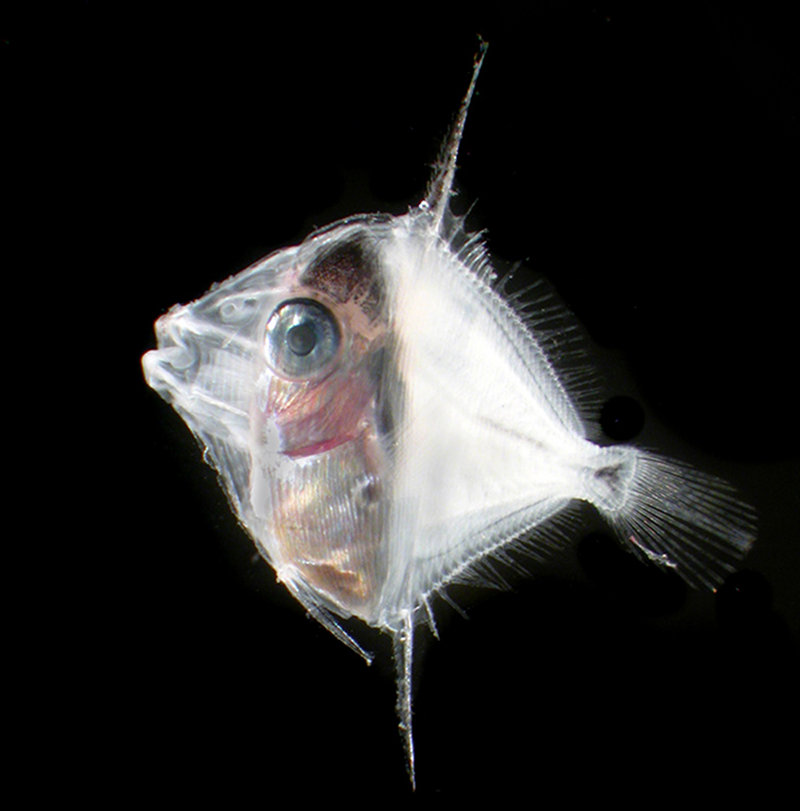
By Robert Cowen, Ph.D., Director and Project Lead - Hatfield Marine Science Center, Oregon State University
August 21, 2013

The mighty goliath grouper (Epinephelus itajara) may live its larval stage in the mangrove nursery of a brackish estuary before heading to the reefs to grow and mature. Adults of this critically endangered species can grow to lengths of 3 m (10 ft), and weigh as much as 360 kg (790 lb). This individual, encountered on Pulley Ridge, has a spiny lobster antenna protruding from its gill, indicating successful hunting. Image courtesy of Brian Cousin, Florida Atlantic University Harbor Branch. Download larger version (jpg, 733 KB).
Population connectivity refers to the exchange of individuals from one population or sub-population to another. The mechanisms of exchange can be either as adults swimming from one location to another and/or the exchange of larvae.

A colony of Madracis decactis (Ten-ray Star Coral) at about 60 m (200 ft) on Pulley Ridge. Population connectivity data indicate that larval transport for coral species occurs over shorter distances than for most fish species. Image courtesy of Brian Cousin, Florida Atlantic University Harbor Branch. Download larger version (jpg, 582 KB).
Other types of connectivity include habitat connectivity and ecosystem connectivity. Habitat connectivity usually refers to the exchange of materials or individuals from one habitat to another. A good example of this is the movement from nearshore mangroves by juvenile fish to offshore coral reefs as they mature into adults. Habitat connectivity can also refer to moving from shallow to deep habitats or vice versa. Ecosystem connectivity is a term occasionally used to define the full suite of connections throughout an ecosystem, including energy flow, nutrients, and organisms.
For our study, we have particular interest in population connectivity due to its importance in understanding the linkages among geographically separated populations of organisms such as corals and fish. There are two components of population connectivity that are important and which interact.
The first aspect is the numerical extent of exchange. Simply put, when very small levels of exchange occur (i.e. just a few individuals per generation), then we consider the level of connectivity to be very low and of primary importance to genetic exchange. However, when the level of exchange is several orders of magnitude higher, then we may consider the populations to be ecologically- or demographically-connected, meaning that the level of exchange between locations is enough to influence the population structure of the receiving location (i.e., it is sufficient to impact the replenishment of individuals into the population, with the potential to help sustain the population size).

Surgeonfish larvae caught with our plankton net. The whole body is almost transparent expect for a silvery vertical band masking the eye as if there were another fish in the vertical plane (great camouflage to avoid predators). This larvae started out as a small floating egg which rapidly developed into this stealthy swimmer ready to settle onto a coral reef somewhere on Pulley Ridge. Image courtesy of Brian Cousin, Florida Atlantic University Harbor Branch. Download larger version (jpg, 366 KB).
The second component of population connectivity has to do with the spatial extent in which exchange is occurring. When exchange is very limited between populations, the individual populations are considered ‘closed’, meaning they are not replenished by any outside source. In marine systems, there are few truly closed populations, except perhaps around very isolated oceanic islands. It is more typical for exchange to occur across different distances of water, either along the coastline or between islands. The distance over which such exchange occurs, and the true level of exchange, will vary under different ocean currents, coastline shapes, and biological parameters including timing of reproduction and duration of the larval stage. The range of distances over which exchange occurs can be as short as a few kilometers or even less to possibly thousands of kilometers, and is species dependent. Evidence currently suggests that for most coastal fish species the typical distances are on the order of tens to a few hundred kilometers, and likely less for corals.
For resource managers, understanding the geographic extent of population connectivity is important because it provides a sense of scale for management, especially with respect to spatial management options. A given location or population might be well supplied by nearby source populations thereby allowing sufficient subsidy to offset heavy fishing pressure. Knowing where key source populations are located can also serve to identify particular locations to add protection to sustain fishing activities or to mitigate other extractive or potentially detrimental activities whether anthropogenic or naturally occurring.